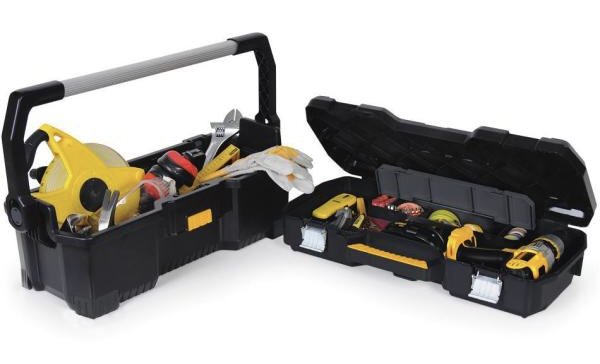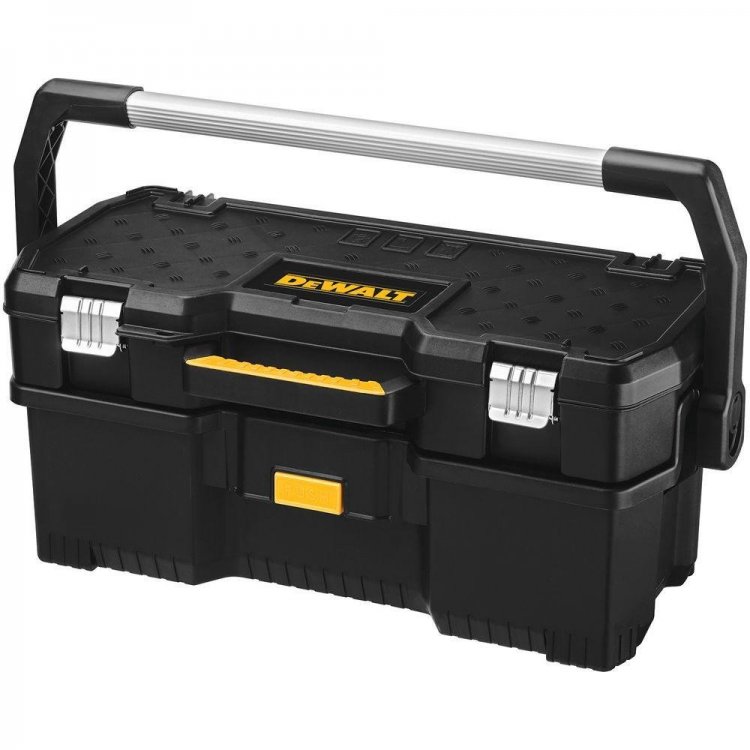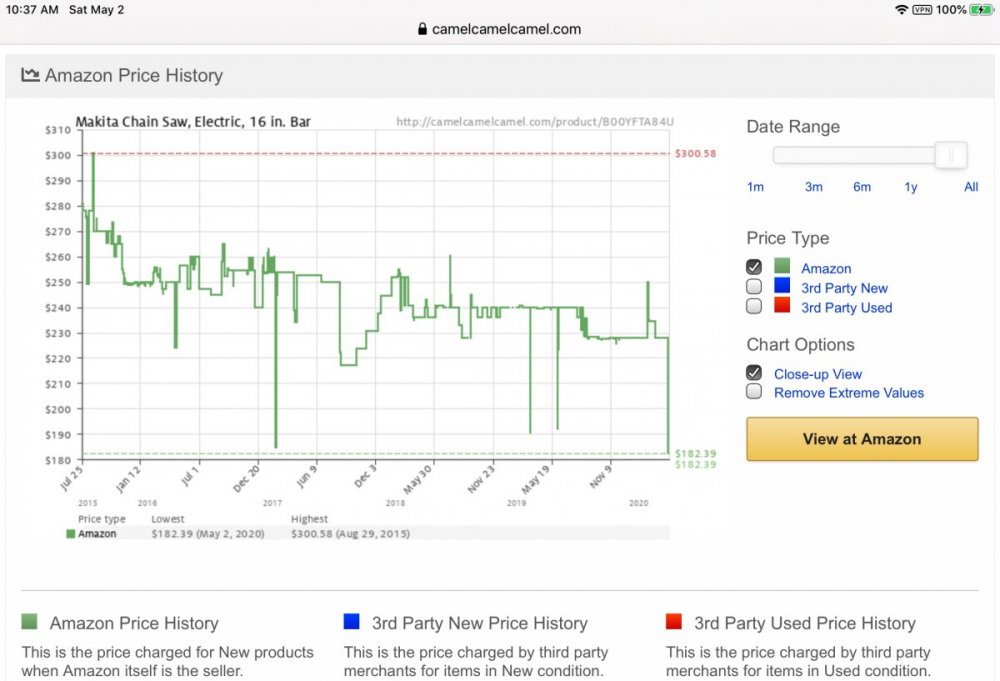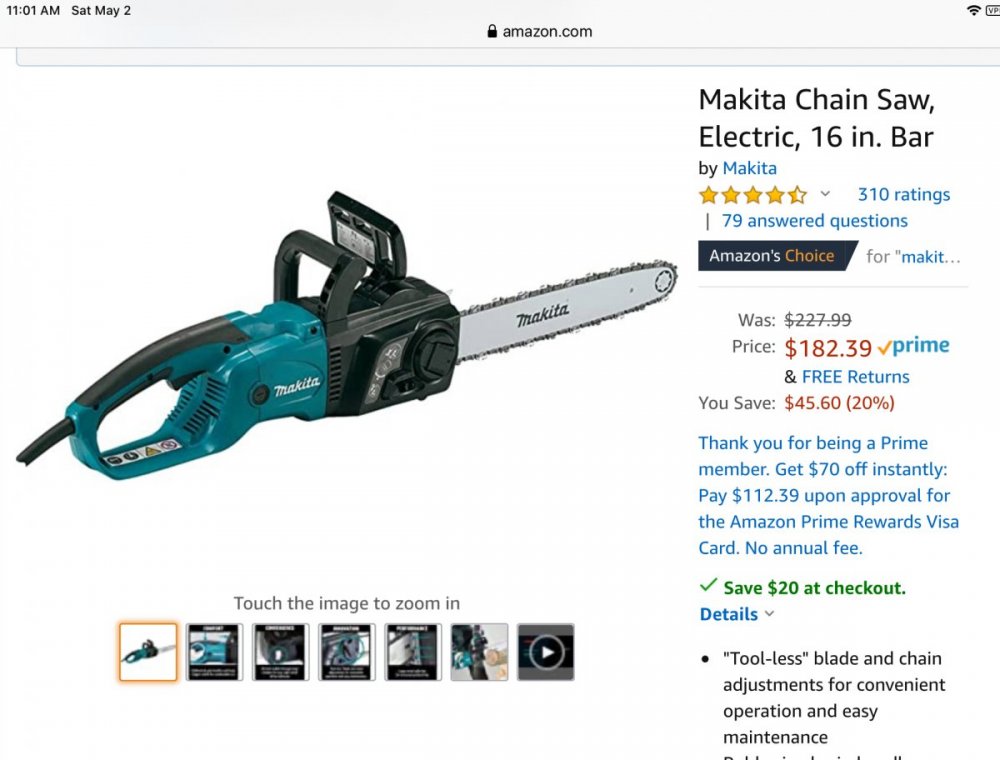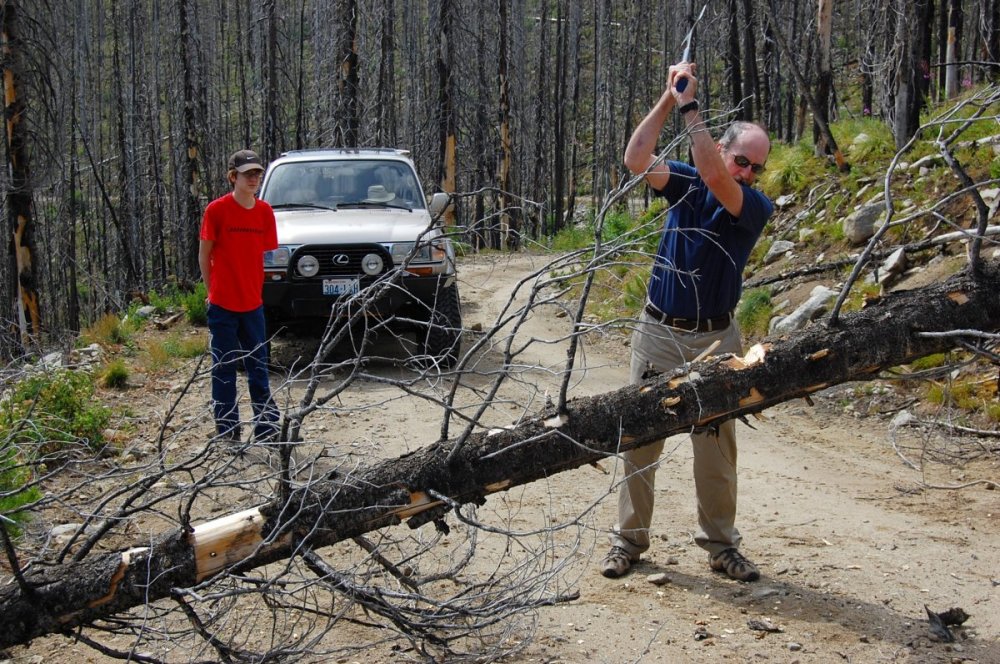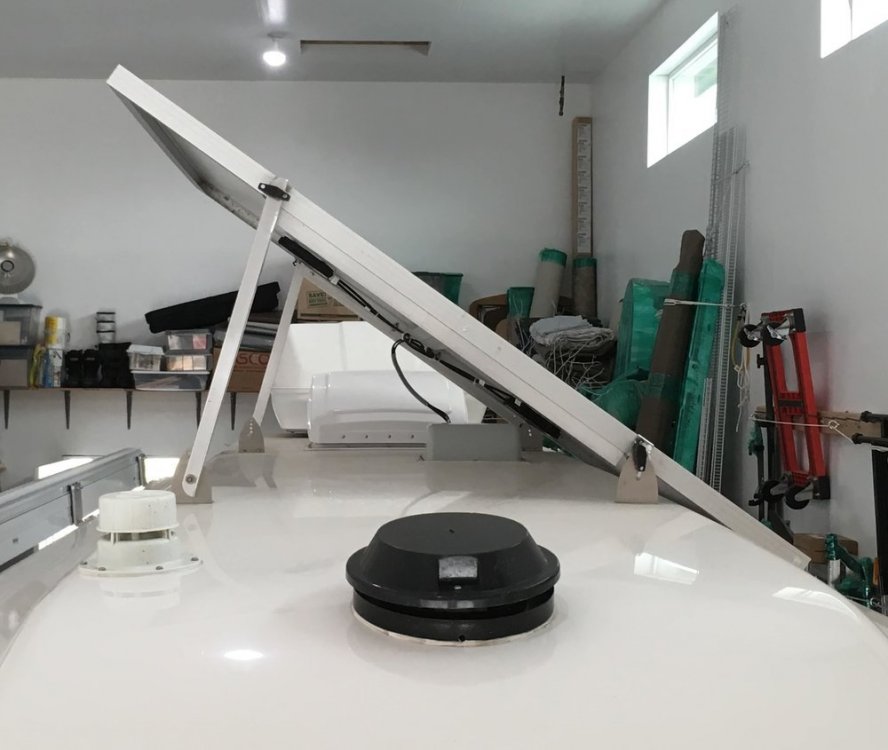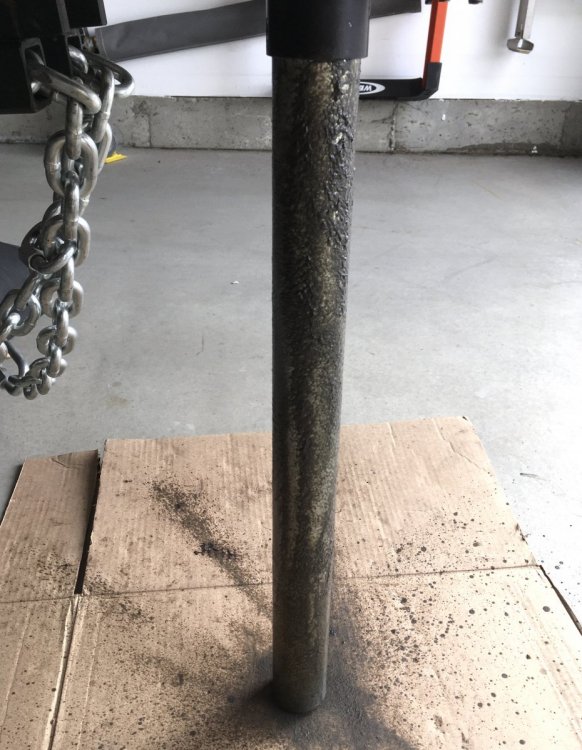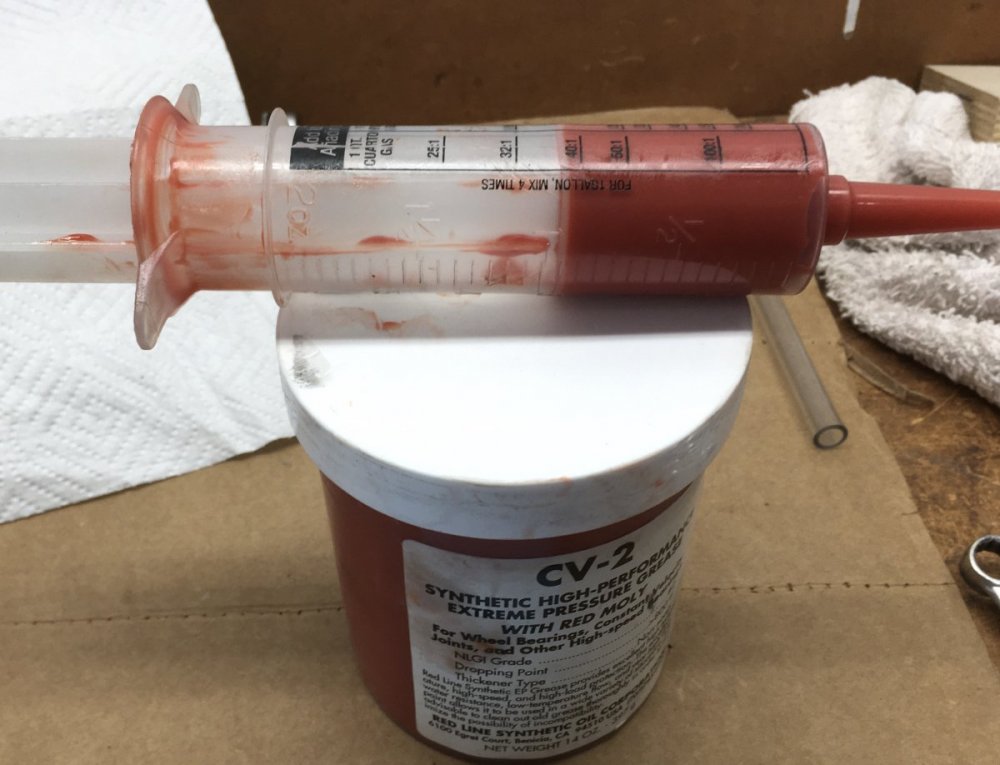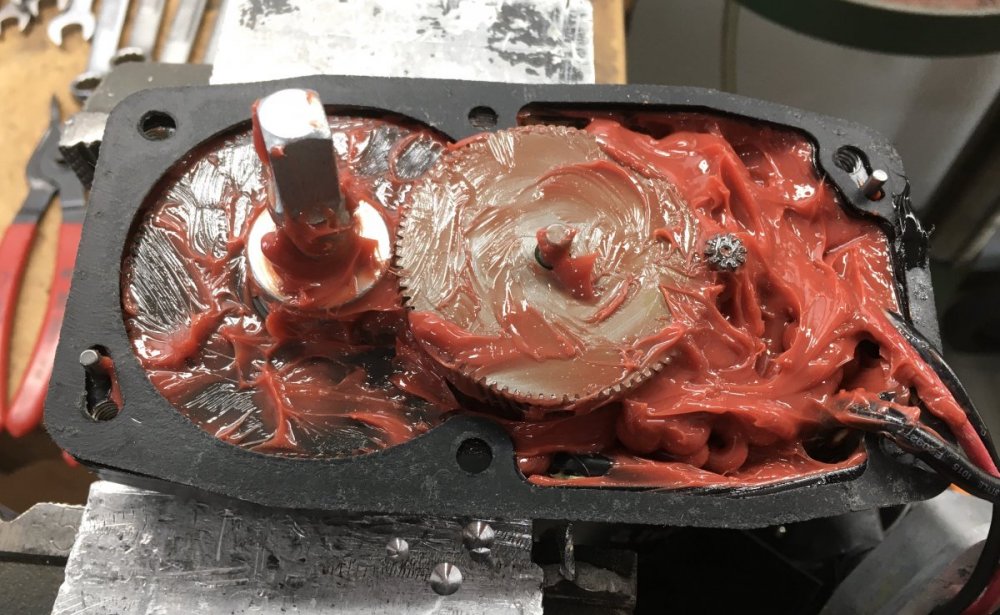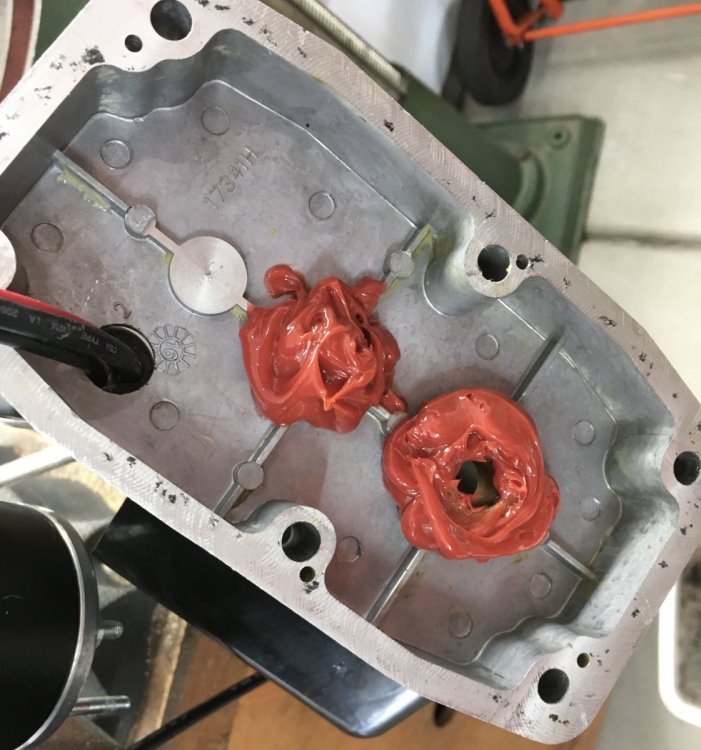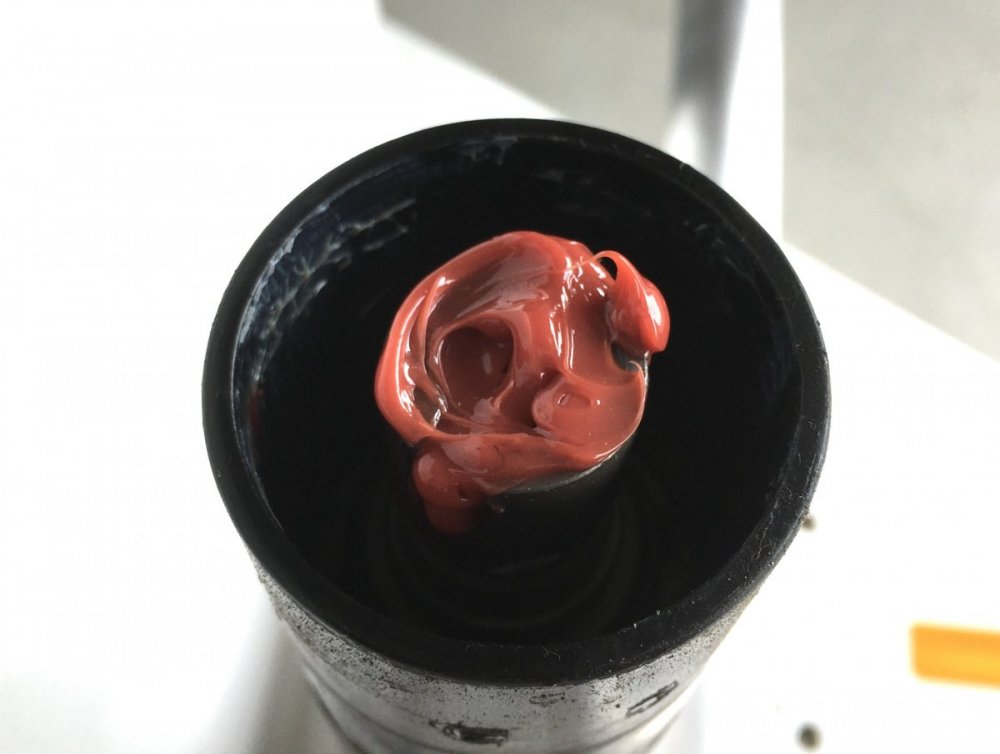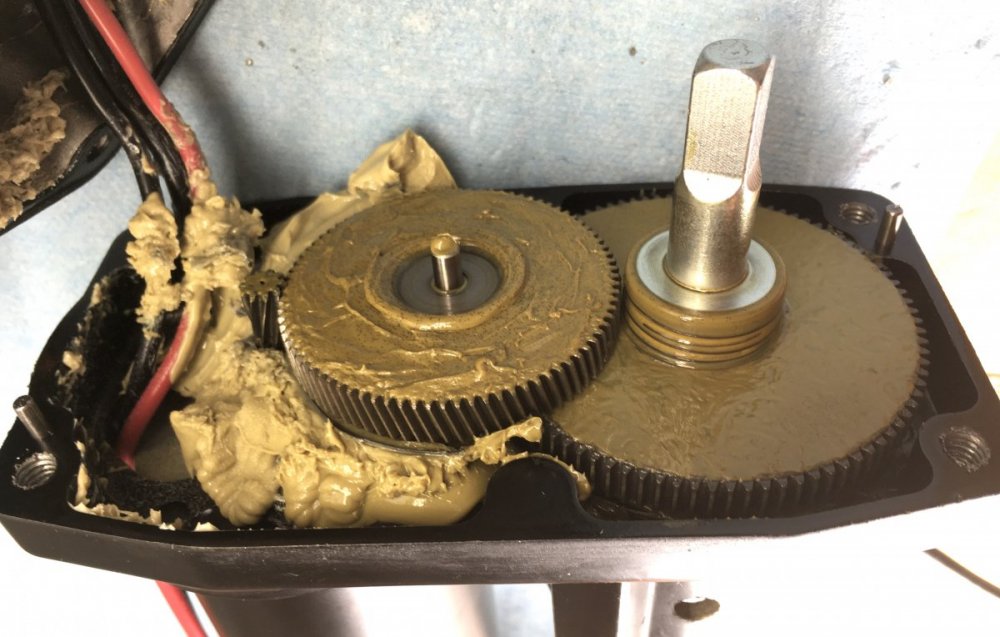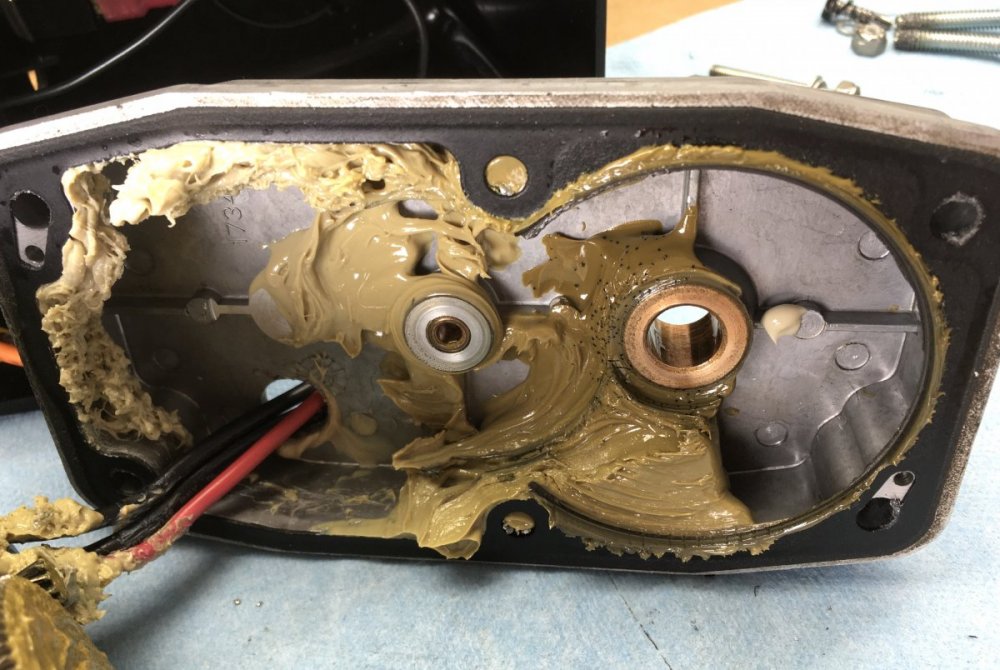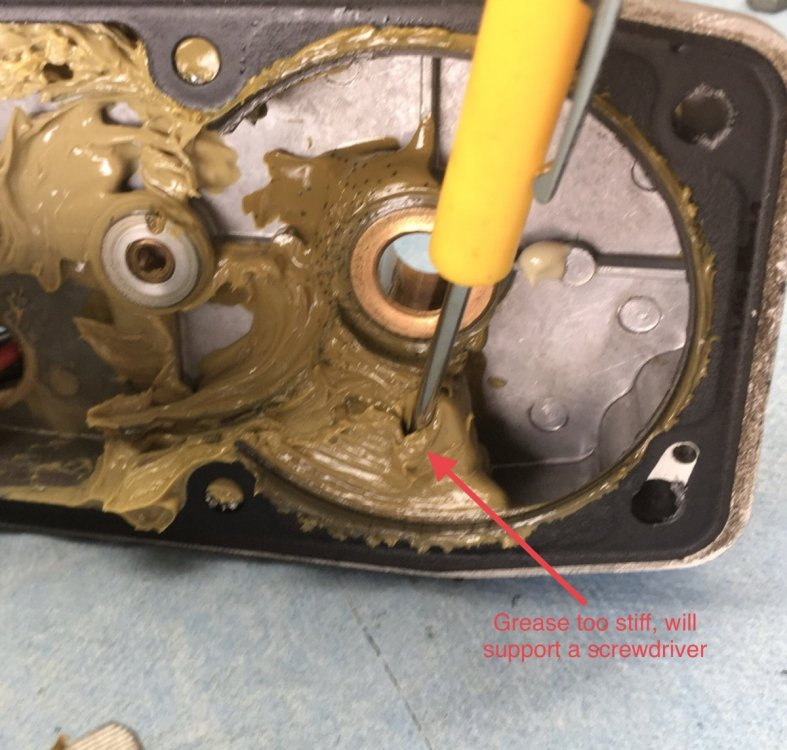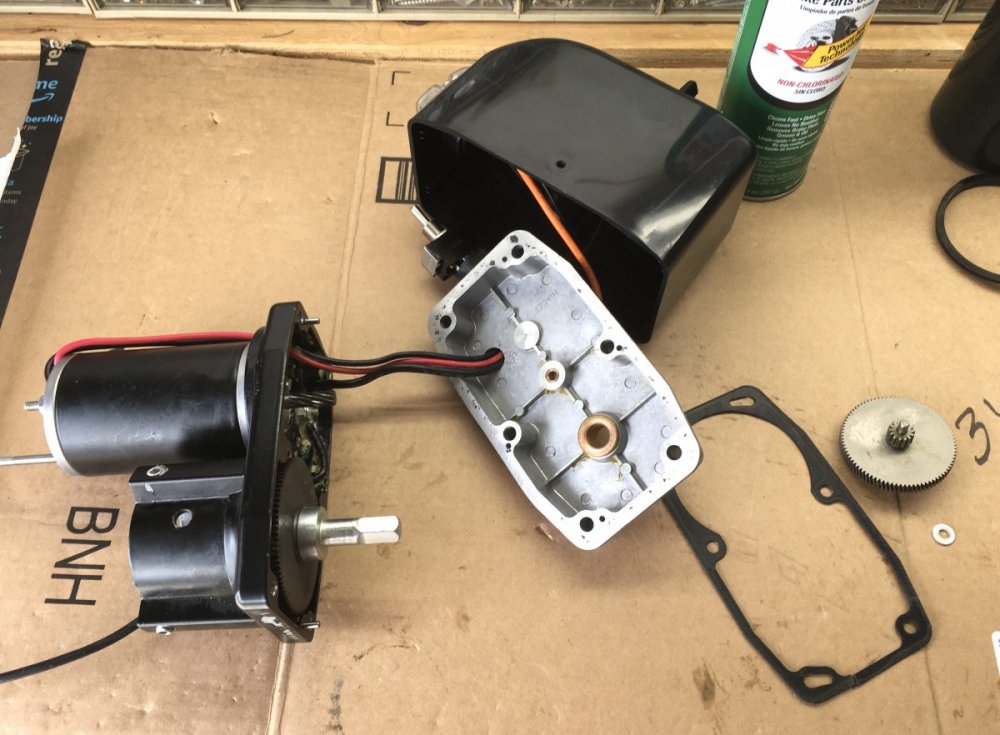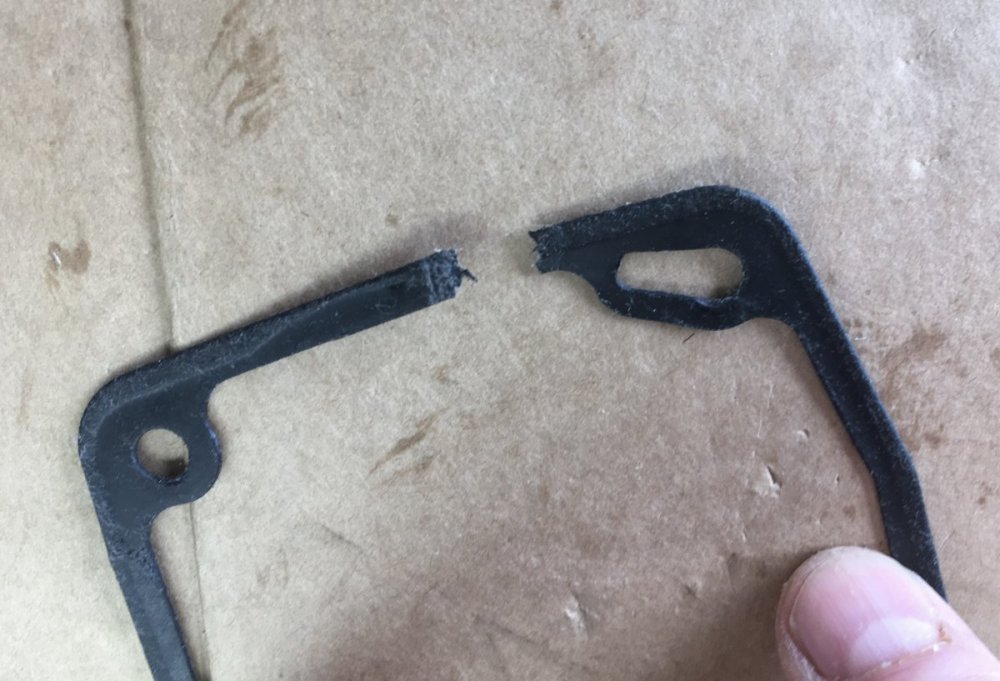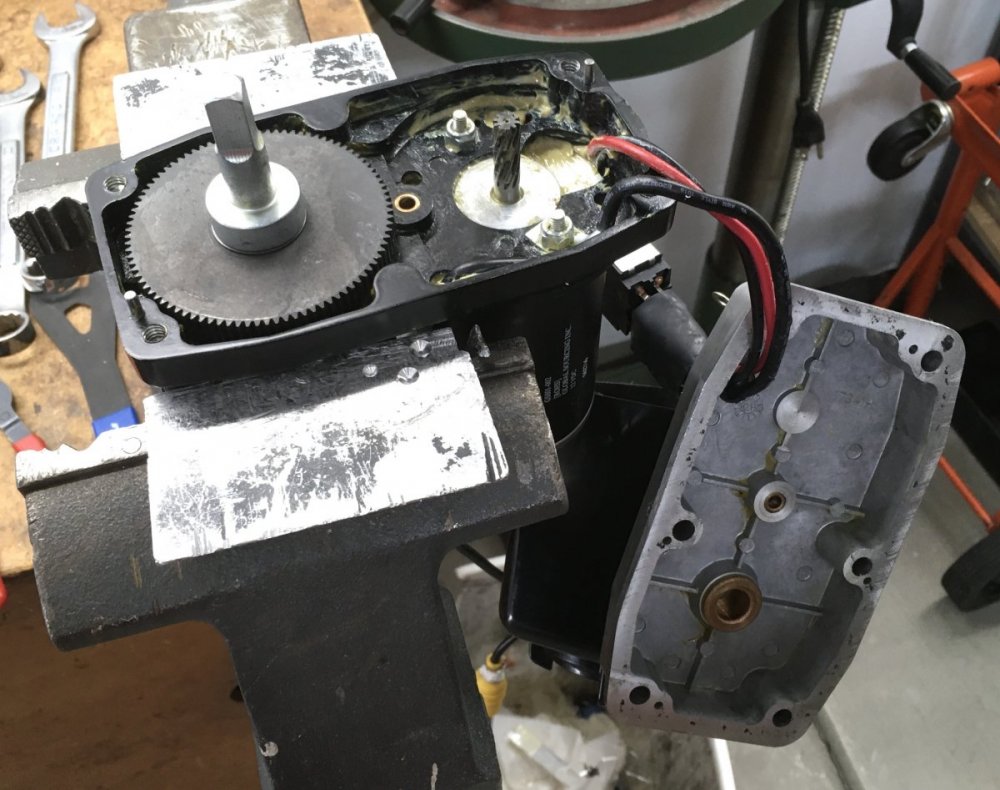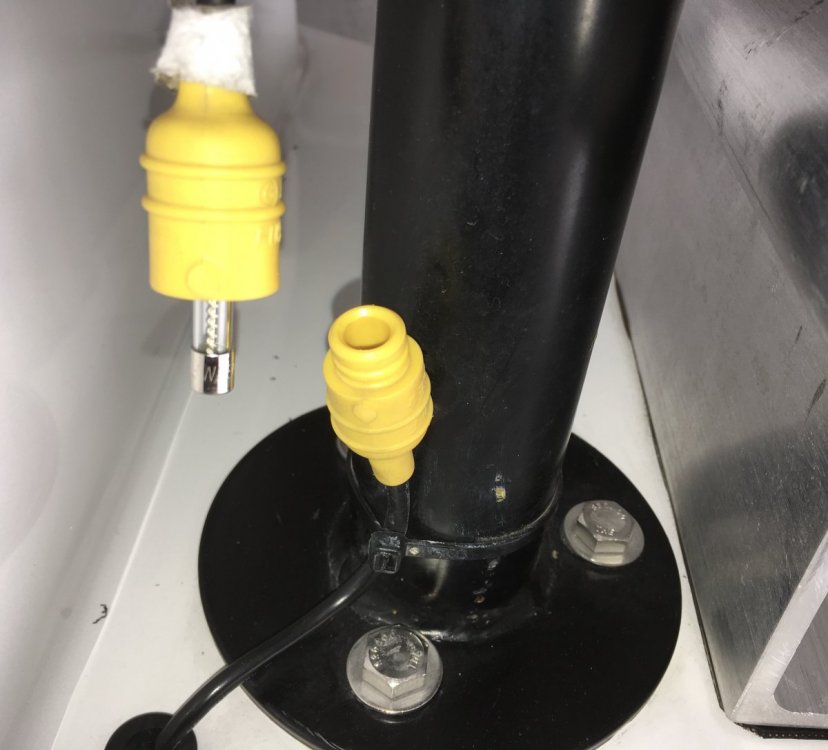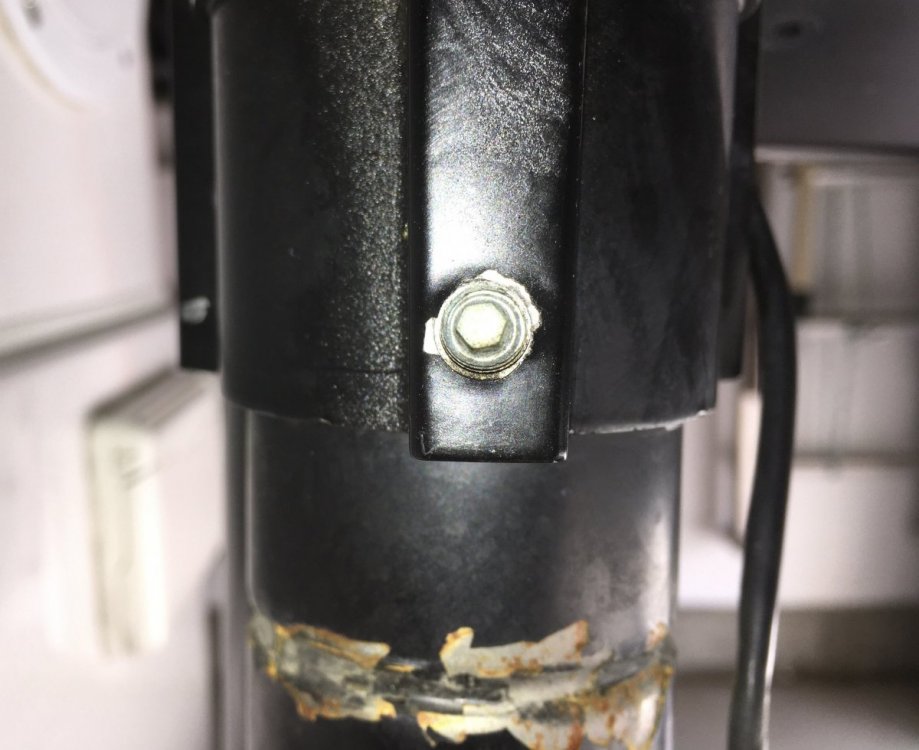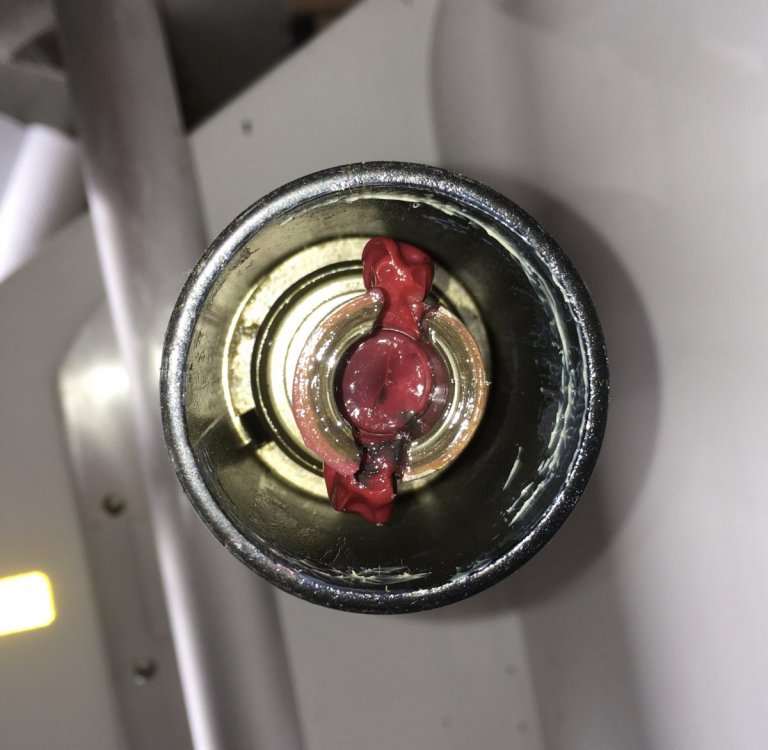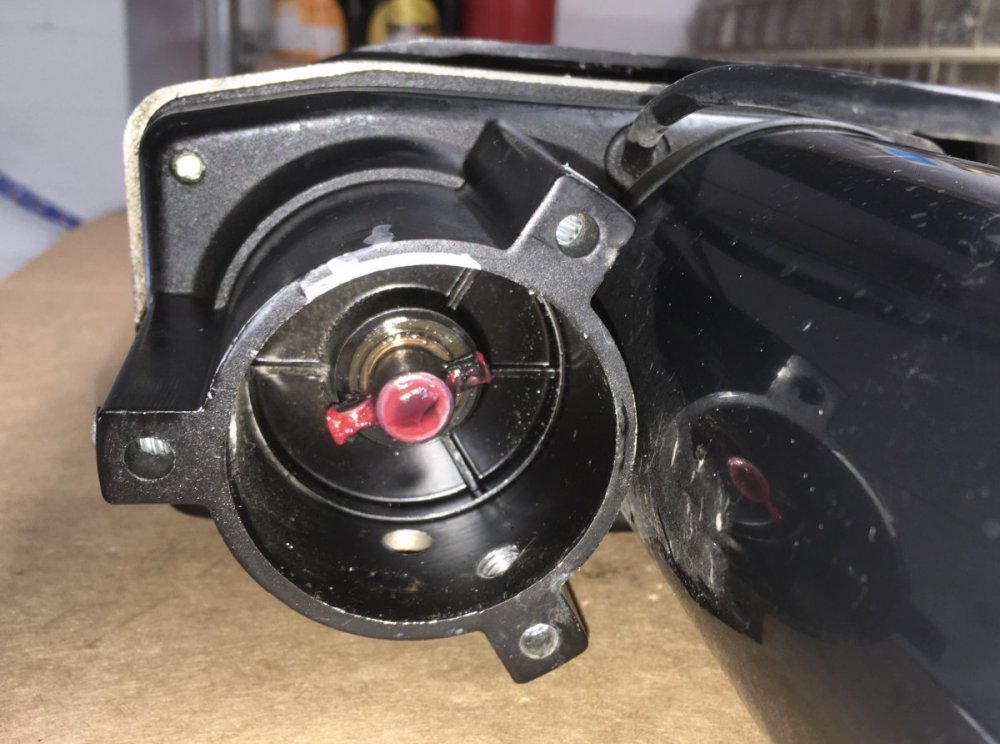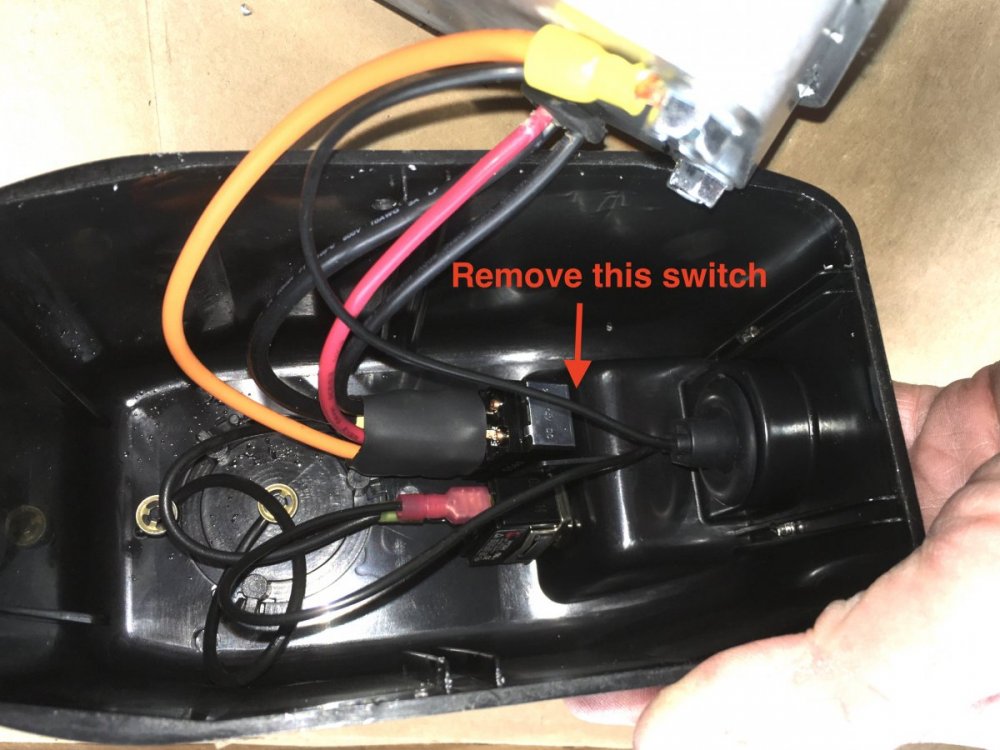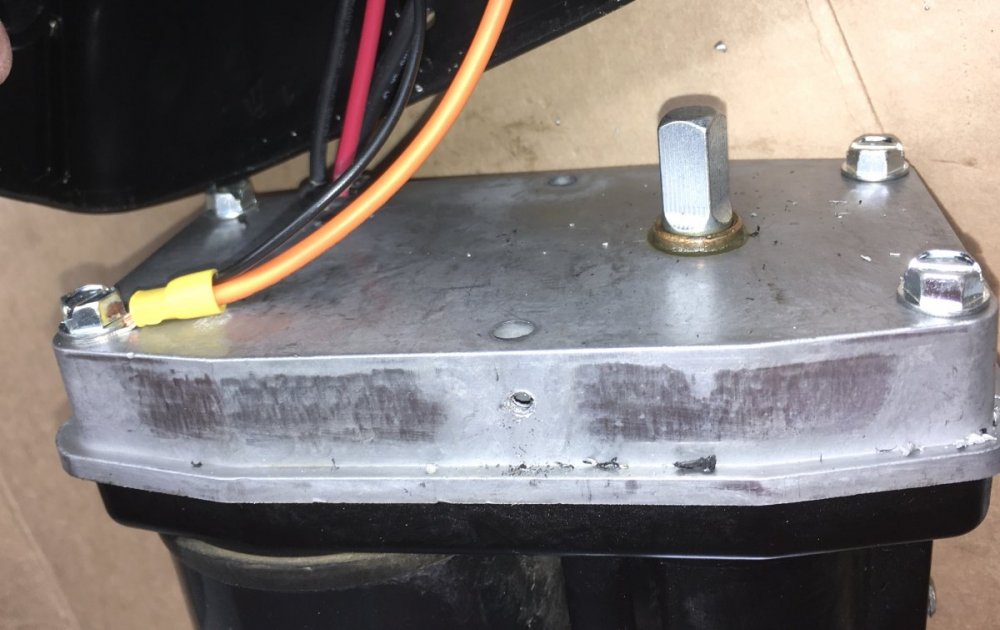-
Posts
5,759 -
Joined
-
Last visited
-
Days Won
243
Everything posted by John E Davies
-

Makita 16” corded electric chainsaw $182 best price ever
John E Davies replied to John E Davies's topic in General Discussion
Dave, those Silky saws are awfully nice, but pretty expensive for a manual saw. I have an old fashioned triangular Sven Saw (15”) and it cuts well. I keep in in my main bugout bag and rarely use it. I have just reached the age where manually whacking at sticks beats me up. I am very careful with chainsaws, this will not be my first. I dislike the gasoline mix, smells, maintenance, leaks and stains associated with a regular chainsaw. I used to carry one in a covered utility trailer, but that went when the Ollie appeared. I also sold that gas saw and have missed it a little. I have been wanting a good electric saw ever since. I think I found a carry solution, it is a little bigger than I like but maybe I will be able to carry all the accessories in there, and some bar oil. .... this is 24” x 13” x 11” tall (outside), and the bottom compartment is 6” deep. Dewalt tool box John Davies Spokane WA -
I have been eyeballing this high quality saw for three years and I just got an alert that the price has dropped to the lowest it has ever been. I suspect that the price change means that they are bringing out a new model at closer to this one’s $300 MSRP. If you think you need a powerful corded saw for home or camping, this is the one to get now..... the smaller 14” model has not been discounted, it is currently at $205. Amazon link: Makita 16” electric chainsaw The owners and parts manuals can be found here: Makita Electric Chainsaw Info I just ordered mine, plus two extra chains, two 25 ft 12/3 cords and one 50ft 12/3 cord. I will use it at home for occasional limbing, and when camping to discretely cut firewood from downed branches, or to clear obstructing branches around a primitive site. it has a soft start feature and will easily run off my 2400 watt Yamaha generator, which I keep in the back of my Land Cruiser. So the saw could be used if I encountered a downed tree across a back road, which has happened more than a few times. It will also run off the Ollie 3000 watt inverter, but it will use a lot of juice so I would not do it unless the battery bank could recharge soon. I ordered the various sizes of cords so I could choose the shortest that would reach the power source, to minimize voltage drop. I already have a stout 10/3 x 25foot cord, so combined they could reach 125 feet, which I think is plenty. If I had to, I could drag the generator to the tree... this would sure beat the old method...... I have been looking for suggestions for a hard (leak proof) carry case for the saw with the bar removed, it is 20” long, not including the short cord sticking out the back. Like any saw it will seep bar oil for a while after use. Any ideas? John Davies Spokane WA
-

City and Fresh Water Intake Overflow
John E Davies replied to Stephen and Kelly's topic in Mechanical & Technical Tips
You can easily fill the tank using the right back port using a bucket and a short length of hose, suck it in with the pump, just like winterizing. I personally would not use either of those street side ports until I fixed the problem, that is a very massive leak and it could affect other stuff like electrical components. Be safe, John Davies Spokane WA -

City and Fresh Water Intake Overflow
John E Davies replied to Stephen and Kelly's topic in Mechanical & Technical Tips
Those are the belly drains (weep holes) and normally there should be NO water coming out. You have a massive internal plumbing leak under that cargo floor. Probably a spilt in a line or fitting. There are one-way check valves for both those water ports, maybe one has opened up. It should be easy enough to locate. Just look for the geyser. Take a picture and get back to us... Good luck! John Davies Spokane WA -
So are any of you folks with cabin smells using a grey tank treatment? That won’t make burping go away, but at least the burps smell vaguely scented and vaguely lemony fresh.... sort of. John Davies Spokane WA
-
That's interesting, so if you do not have the 12 volt heater kit, and you run out of propane, must you immediately drain the Truma manually? What happens if you run out at say 10:00pm on a 20 degree night and don't notice it immediately? Will it be trashed by dawn? How long does it take to chill? The 6 gallon standard tank will stay at least a little warm for a long time. Hopefully long enough to either get more propane or to grab your socket and drain it.... John Davies Spokane WA
-
In summer temperatures you can just leave the regular heater running most of the time. It keeps the water at around 140 degrees, I think. That is not a very big temp difference (“delta T”) compared to the average outside temp. In cold weather the delta T can be huge and that poorly insulated tank will chill down really fast, so it cycles often and you are also sucking propane into the furnace. In summer I just leave the regular water heater running during the day, even while towing. If it’s cold out, or a 30 mph crosswind at the campsite, I shut it down when not in use. (It can sometimes send smells into an open curbside window....) . At bedtime I shut it down because the igniter snapping sound and “whoooosh” wakes me up. I just reach up and flip the heater on when I start to wake up around dawn... The switch is easy to reach from that side bed. For cold weather camping I might pick the Truma to save gas. But I don’t know how that version prevents freezing. Maybe somebody can comment on that issue. Some Trumas auto drain when it gets near freezing....? The regular heater must be left on, or drained and bypassed. John Davies Spokane WA
-
LOL... I am a fan of the regular heater, even tho it is inefficient and a little crude. I don’t think that you made a mistake in your choice. OTH if an Oliver employee/ salesperson told you that you would be able to use those “extra” 6 gallons, then you should complain and ensure that that misinformation is not repeated. If it was an owner who was showing you his trailer, then I suspect it was just a simple error. But you should mention it to him anyway. John Davies Spokane WA
-
??? .... That extra water is not actually usable. If you are connected to an outside water source and sewer, you have limitless fresh water. So that 6 gallons doesn’t matter. If you are using the onboard fresh water supply, the pump replaces the hot water in the tank with cold water, and it will suck air when the fresh tank is nearly empty. In that case, the last 6 gallons trapped in the water heater are not at all usable. Unless you turn off the heater, let it cool, go outside with your big socket and drain the tank into a bucket. If there were an inside valve arrangement that would allow the water pump to be switched to suck water from the (turned off and cold) water heater, then that might be a nifty way to use the extra water, which otherwise is essentially inaccessible. But I think it would be a pretty cumbersome arrangement.... the best way to save fresh water is to use the composting toilet. John Davies Spokane WA
-
What is your tow vehicle? If it is a light duty pickup or big SUV, consider NOT getting the tongue cargo tray. Keeping extra weight off the front of the trailer really helps in terms of adding payload inside the TV, and in reducing stress on the rear suspension of the TV. The smaller propane bottles also will help, but only a little. If you have a HD truck, never mind, it will be a non-issue. FYI the cargo tray can easily be added in the future in less than an hour. If you have a HD TV, then forget the Andersen hitch. It is not at all needed. Get the solar and associated equipment, once you experience the joy of being independent of hookups you will never look back. Get the Natures Head toilet, there is a learning curve but once past that, enjoy not having to deal with the black tank. You can possibly dump your grey water at your home (depending on codes and your neighbors) but many places prohibit installation of a official RV dump at a residence. I routinely drain my grey tank in the gravel. Some remote camping areas allow watering of shrubs with your grey water. The pee tank is simple to empty just about anywhere, in a toilet or sink. The cell booster is very important to us, it sometimes means being able to make calls or send emails when otherwise we would be completely cut off. HIGHLY recommended for travel anywhere west of the Mississppi. Wifi booster - a complete waste, especially in campgrounds where the bandwidth gets overwhelmed by all the users. For pirating a signal at a McDonalds, you can get a little closer and just use your phone. Microwave - I have mixed feelings, it is really nice sometimes but it is the Killer Of Batteries. It sucks up vast amounts of juice when running off the inverter. My microwave draws 70 amps DC....I would love to pull ours out and throw it very far away, but the wife would not be pleased.... Truma water heater - some folks love it, to me it is a needlessly complicated, expensive, hard to fix nightmare. A standard heater is cheap to fix or replace and doesn’t require any expert technical knowledge. Options that are not important to you (now) will be important when you sell, so buying the more labor intensive options makes sense, even if you think you won’t use them. Where do you live and where do you plan to travel? That will have a big effect on what equipment you might find useful. John Davies Spokane WA
-

Anyone have a Roof Maintenance Checklist?
John E Davies replied to ShallowGal's topic in Mechanical & Technical Tips
If you have solar, it makes access to the roof sooooo much easier if you make some panel extension arms, so you can tilt it way up and then slide yourself around on a soft foam camping pad..... https://olivertraveltrailers.com/forums/topic/2791-how-to-solar-panel-extension-arms/ John Davies Spokane WA -
These are pretty amazing and the $49 Prime price for a pair is fine. At 6500 lumens (a bright 100 watt "equivalent" LED is around 1500) they are way too bright, painfully bright, for a regular garage ceiling, but when placed up high they do a great job without being so bright that you have to wear a ball cap. https://www.amazon.com/dp/B07KRJ6VWL?tag=camelproducts-20&linkCode=ogi&th=1&psc=1&language=en_US I had two in my 10 ft tall garage for four months and moved them to the 16 ft RV bay, they are perfect in that much larger space. I ordered another pair to add there. I haven't had any problems with mine so far, they do not interfere with the garage door openers, but that is a possibility with cheap LEDs. I would not put one close to an opener unit, or just plan on having the lights switched off if there are transmitter issues. At this price you could order an extra box and keep it for spares, just in case one light fails. Highly recommended, but only for a tall ceiling! John Davies Spokane WA
- 1 reply
-
- 1
-

-
Any of those teflon (PTFE) sprays would probably be OK, some RV owners swear by them. But the white particles do not really bond to the steel, they tend to flake off and fall away under any real side force. I have not personally tried this type, but their big advantage is they are not very messy, unlike the black moly lubes which are pretty nasty. Why don't you try that product and report back? Be sure to degrease the tubes first, I don't think it will mix with the existing grease. Thanks. John Davies Spokane WA
-
That video ifs OK but he didn't add any grease inside, nor did he even poke it to see if it was congealed like mine was. His was definitely all gone from the teeth. Hardened grease does not flow, so the teeth on the gears stay dry. A more fluid grease will actually get picked up by the moving gear wheels and get "dragged" around, not just stay packed to one side.... I have no idea if my grease got hard through time, or if it was that way when the jack was built. If somebody wants to open up a brand new jack for a look, please post a description about how the grease looks... John Davies Spokane WA
-
There is no guidance on a replacement interval. It is a judgement call by the tech or owner who does the job. I personally would want to trash the original cheaply made bearings by 15,000 miles. Mine are OEM and have been repacked once, and in my mind are are due now (12,000 miles). I have Timkens and good seals ready to go. Once you have high quality parts installed, I would let them go indefinitely with regular visual inspection and lubing at about a 10k interval. I think it is really important to watch for signs of distress - play and overheating, grease leakage, funny noises - and be ready to act right away in case there is trouble. Having a seal leak and screw up one brake will ruin a trip. The brake may lock up, making it impossible to tow the trailer without adjusting the controller really low. Which makes it dangerous if your TV has marginal brakes. Disc brakes have huge advantages over drum brakes in so many ways. The biggest one IMHO is that a failed seal will just dump grease outside the hub, not all over the brake mechanism. Once you contaminate one drum brake, they must be replaced in pairs. What a stupid design..... John Davies Spokane WA
-
I don’t know what more I can add. The fact that these jacks come from the manufacturer with grease on the tubes indicates to me that some sort of lube is needed. They do sometimes have a severe side load if your are parked on a slope. I would use an industrial dry lube (spray moly) but that was my very last resort, it is extremely messy and any overspray drifting onto the frame or gelcoat might be hard to get off. I use a similar product (Lock-Eze) on locks and it is truly messy and stains your hands very badly... I have not yet checked that glop I sprayed on, I will do so soon and report back. EDIT, after 24 hrs the fork lift rail lube is still a nasty gooey mess. I was under the impression that it would dry, but it is way too gross for a place where an owner might get it on his hands or clothing. I am going to flush it all away with solvent. I think I will just leave the tubes dry. John Davies Spokane WA
-
I can't answer that, Jason told me that the service department uses white grease on it. Sometimes it gets a pretty heavy side load, I think it would benefit from something slippery between the two sleeves. There is a lot of chatter about this on RV forums but nobody seems to have discovered a wonder lubricant. Maybe dry is best.... John Davies Spokane WA
-
I wanted to try a new lubricant on the vertical sliding tubes. Oliver Service uses a plain lithium grease. I wanted something that would not attract dust and turn into grinding compound. I tried this specialty lubricant: CRC Forklift Inner Slide Lubricant I extended the tube, took off the foot and degreased it. I used the spray tube to inject some lube up into the joint between the two parts. I then sprayed the visible part: I have to say that it was not what I expected, it is quite thick and gloppy. I will see how it does after waiting overnight. If it remains sticky I may try a dry Moly lube. I will report back on how it does, or does not ;( EDIT, after 24 hrs the fork lift rail lube is still a nasty gooey mess. I was under the impression that it would dry, but it is way too gross for a place where an owner might get it on his hands or clothing. I am going to flush it all away with solvent. I think I will just leave the tubes dry. John Davies Spokane WW
-
I used Redline CV-2 grease. It should flow better than the thick OEM glop. This big syringe made it easy to inject grease where I wanted it. EDIT: Redline CV-2 Magic Grease Big syringe Fill up the lower case. Be sure to get grease under the big driven gear: Fully surround the two upper bearings. There is no need to fill the entire upper cavity. I added a small amount of black silicone RTV sealer to the torn area of the gasket. Reassemble the gearbox. Clean the old grease from the slotted coupler and add some new: Reinstall the head unit to the tube. Make sure the pin engages the slot! Secure the three Allen screws, connect the wire and secure it with black nylon ties. Function check the jack. I was disappointed to discover that there was no change in the sound. level..... darn it. John Davies Spokane WA
-
Here is the inside lower part. The grease is not contaminated by water entry, but it has completely vanished from the gear teeth where it is most needed. This is the top portion. There is not nearly enough grease around the main shaft bearing, water could enter here. Note the black streaks and speckles. That is metal contamination from the gears.: The grease is so thick that it will support a small screwdriver: Because the grease looked so bad I decided to remove as much as I could rather than just adding more.... I wiped out most of it with paper towels, then used brake cleaner to flush the rest. I was careful not to get any down into the motor. I blew the parts dry with compressed air. The plastic parts do not appear to have been affected by the solvent. I was sure to get as much out around the lower drive shaft as possible, I did not remove the cross pin. I tried to work around the gasket but it tore: I moved the gearbox to my bench vise to hold it steady for reassembly: John Davies Spokane WA
-
EDIT 04/14/22: ... https://olivertraveltrailers.com/forums/topic/6781-how-to-service-your-rear-electric-jacks/ I have never opened up a jack, they are all starting to get a little loud so I decided to service the front one. I don't remember them being this loud when new: .... Oliver Tongue Jack Operating Sound Here is the manufacturer page: ... https://olivertraveltrailers.com/wp-content/uploads/oliver-university/Component_Manuals/Stabilizing_Jacks/vip3000_Electric_Jack_Manual.pdf The rear jacks are similar to the tongue jack, except they do not have the plastic cover with light and switches. For the tongue jack only, can open up the gearbox area without removing the head, but you are supposed to lube the drive pin where it connects to the vertical tube, so you might as well unbolt the top and take it to a workbench. Unplug the 30 amp slo-blow fuse inside the waterproof holder. Cut any tie wraps. This is the 12 volt power wire, the ground happens through the jack body and trailer frame. NOTE: there is another fuse in back under the street side bed, I am not sure why there are two fuses. Can anyone comment? Use an Allen wrench and unscrew the three countersunk set screws a couple of turns - they are spaced along the base of the head unit. Lift the head off and set it aside. Here is the drive coupling down inside the tube, with the factory lube. It looks fine. Here is the head socket, showing the pin that fits down into that coupling: FYI it is possible to drive the pin out. There is a 1/4" access hole in the side of the cavity. I did not want to disturb it, for fear of damaging the plastic bearing support behind to it. You need to get some slack in the wires so you can slide the cover assembly out of the way. Remove the rubber boot/ nut that holds the Up/ Down switch into the cover, pull it in and let it dangle: Remove the yellow ground wire and pry out the rubber grommet that contains the three wires. Slide it up toward the switches. This will allow the gearbox cover to slide upwards. Remove the other three bolts. CAREFULLY wiggle the lid and pull it off. John Davies Spokane WA
-
If these switches were actually installed to shut down a fan that is bothering the owner (instead of manually turning it on in place of an automatic switch) the label should say so. Perhaps “Refrigerator Fan Disable” would be better. Vague labels are a nuisance. My fan appears to be a computer fan, which was never intended to get very dirty. I bet that my towing on dusty roads killed its bearings. John Davies Spokane WA
-
Some hull numbers have fridges with automatic fans, with a temperature switch, it all depended on how the units were configured when they were shipped to the factory. I would rather have a switch like yours. My fan failed (horrible squealing) and there was no way to shut it off except to unplug the wires going to it from the control board. You can reach those wires (at the bottom access panel), but you canNOT reach the fan itself to change it without pulling the entire fridge into the cabin. The fan is right between the two sets of coils, and buried behind fiberglass. All last season I had no problems with my fan not operating. Enjoy your fan switch! https://olivertraveltrailers.com/forums/topic/3296-how-to-dometic-refrigerator-cooling-fan-noisy-disconnect-the-power-wire/ John Davies Spokane WA
-
Just a friendly reminder - my intent when starting this thread was not to just generally discuss trucks, their features, their reliability, but to grade how your tow vehicle actually pulls your Ollie, preferably under stressful conditions . Cruising flat terrain near sea level is not a real test. How it functions at 100 degrees, 8000 ft and a 30 mph headwind is most meaningful. Or climbing an 18% grade back road with 10 mph switchbacks... Basically, how does your truck perform when the chips are down? Thanks. John Davies Spokane WA


